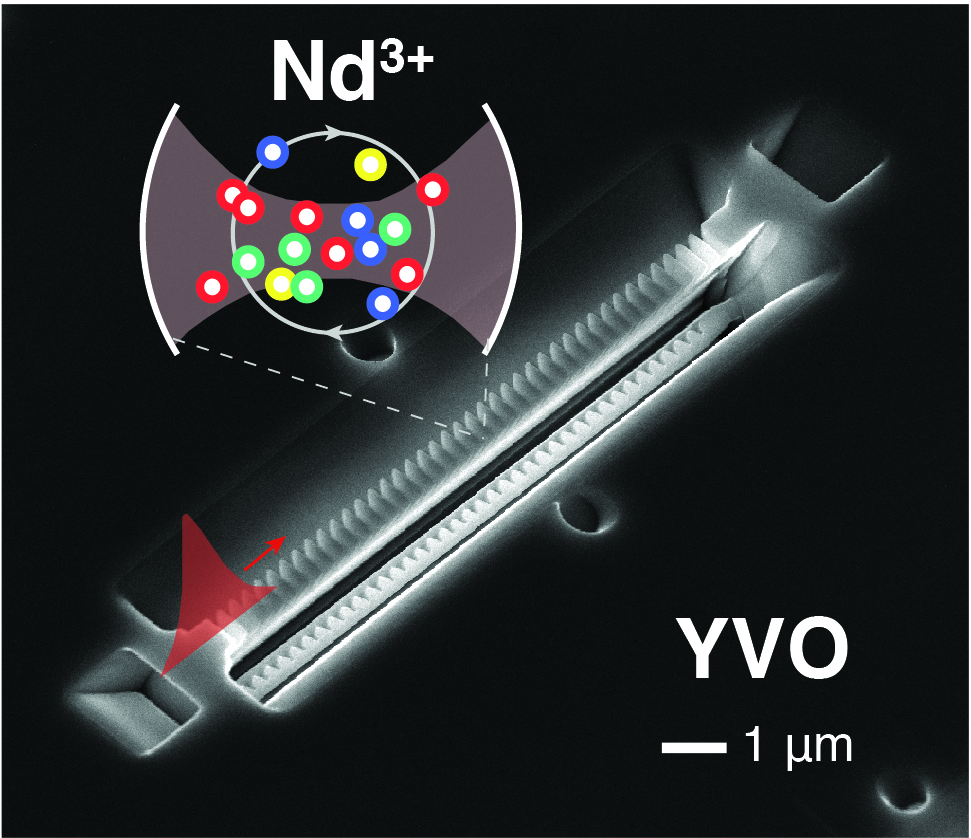Rare-Earth Nanocrystals May Be a Key Component of Building the Quantum Internet

Credit to Author: Michael Byrne| Date: Thu, 31 Aug 2017 18:00:00 +0000
Bits are easy. The fundamental unit of electronic information since the concept has existed, a bit is simply a state that can be true or false. A bit either is (1) or isn’t (0). It’s not hard to store such a value electronically. The first computer memory devices did this via accumulations of static charge, as in selectron tubes. Now, we store bits via transistors, the smallest of which approach the scale of single atoms.
The information frontier, however, is quantum. Here, the fundamental unit of information is different. Bits become qubits. Qubits are delicate, for one thing. As weirdo simultaneous combinations of 1s and 0s, rather than simple states of 1 or 0, they have the capability of storing vastly more information. But because they do so in the form of quantum states, the slightest disturbance could mean information destruction. A great deal of effort is currently going into devising schemes for practical, reliable quantum memory.
To that end, researchers based at Caltech led by materials scientist Andrei Faraon have developed a new quantum memory technology that is both efficient and exists at a much smaller and thus more practical scale than most current methods. The technology, which is based on trapping light particles in crystals made from a rare-earth metal called neodymium, may offer a key step forward in the development of long-distance quantum communication and the so-called quantum internet. Their work is described this week in the journal Science.
Qubits can be stored in a lot of different ways via many different properties of particles: electron spin, atomic energy levels, atomic lattices, nuclear spin. Researchers are most interested in photons, at least when it comes to devising practical quantum computing schemes. Photons, which are the fundamental particles of the electromagnetic force (light, electricity), have the advantage of remaining stable over long distances and time periods. The photon property onto which information is encoded, polarization, is also not too difficult to manipulate and reason about.
The problem is using photons in quantum computing systems/networks is scalability. We can do useful things with photons, but we need to be able to do those things at nanoscales. To be sure, there is a lot of ongoing work on this, including many successful quantum chips and photonic integrated circuits.
What Faraon and colleagues are offering here is scale. Existing systems that “faithfully store” quantum information, according to the new paper, mostly function at macroscopic scales. What’s needed are micro and nanoscales. That’s the real world of information processing.
Crystals are a natural place to stash photons. The (very) basic idea is coupling the natural resonance of a crystal to the frequencies of the light particles to be stored in that crystal. Once the cavity’s frequency is synced up to that of the rest of the circuit, things start to look pretty good. Faraon and his group shrink things way down to the point that light and matter are coupling at the scale of single particles, which has the effect of enhancing the interaction. The nanocavity achieved by the group increases both the efficiency of the system and the spin polarization itself. And that’s where the qubit is―polarization.
“The nanocavity scheme demonstrated here enables versatile engineering of the quantum light-matter interface, and offers the unique advantage of faster and more efficient memory preparation,” Faraon and co. conclude in their paper.
Now that it’s possible to manufacture nanocavity devices like this, we can start imagining a bit more realistically practical medium- to large-scale quantum memories. For one thing, this would offer a boost to the quantum repeater schemes required for implementing a quantum internet in which vast amounts of information may be shared globally with the unique security offered by quantum mechanics.